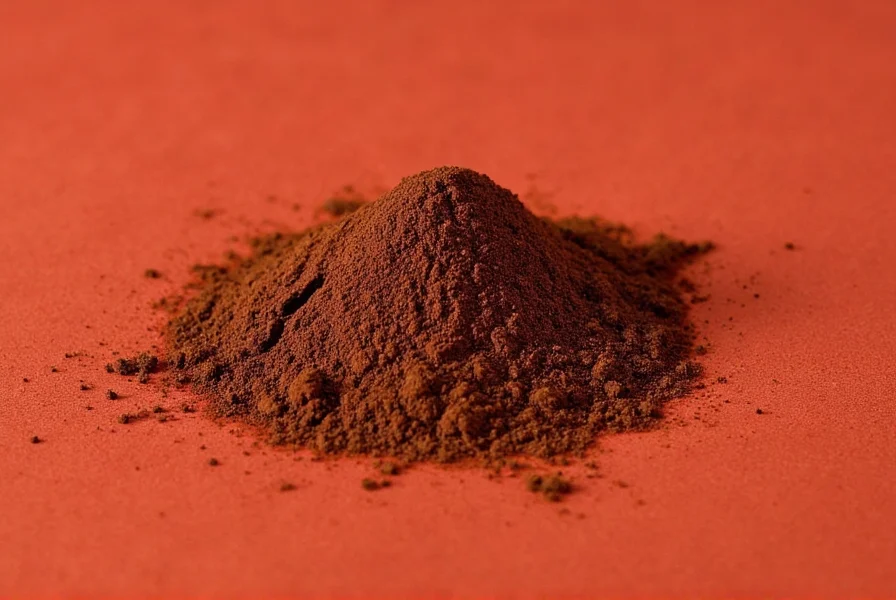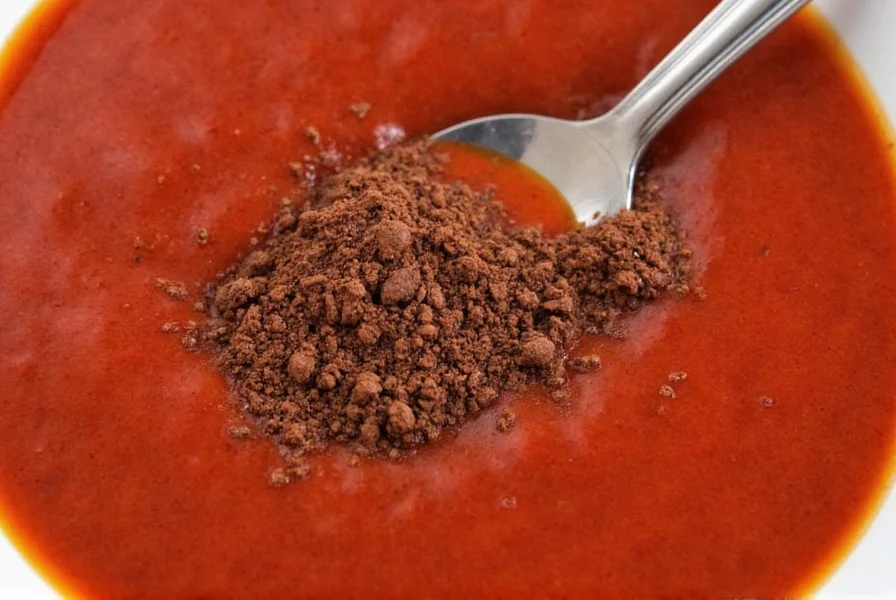Many home cooks hesitate when they see cocoa powder listed in chili recipes, assuming it will make their dish taste like dessert. This couldn't be further from the truth. When used correctly, unsweetened cocoa powder transforms ordinary chili into a rich, complex dish with deeper savory notes. This technique isn't a modern food trend but has roots in traditional Mexican cuisine where chocolate has long been incorporated into certain mole sauces and regional chili variations.
The Culinary Science Behind Cocoa in Chili
Cocoa powder contains natural compounds that interact with other ingredients in scientifically fascinating ways. The key components at work include:
| Compound | Effect in Chili | Scientific Mechanism |
|---|---|---|
| Theobromine | Enhances savory perception | Interacts with taste receptors to amplify umami signals |
| Phenolic compounds | Softens tomato acidity | Neutralizes pH while adding subtle bitterness for balance |
| Natural fats | Carries fat-soluble flavors | Binds with spices like cumin and chili powder for even distribution |
These interactions create what food scientists call "flavor layering"—where multiple taste sensations emerge sequentially rather than hitting all at once. The result is a more sophisticated flavor profile that evolves as you eat.
Historical Context: From Mole to Modern Chili
While American-style chili con carne typically doesn't include chocolate, the practice of incorporating cocoa has historical precedent. Traditional Mexican mole poblano uses chocolate as a key ingredient to balance the heat from chilies. When Spanish settlers introduced cocoa to regions where chili peppers were already staple ingredients, culinary experimentation naturally followed.
According to food historians, some Southwestern U.S. chili recipes began incorporating small amounts of unsweetened chocolate or cocoa powder in the late 19th century, influenced by these Mexican culinary traditions. The practice gained wider recognition when chef Diana Kennedy documented traditional preparations that used chocolate in certain regional chili variations.
Practical Application: How to Use Cocoa Powder in Chili
Understanding the proper technique makes all the difference between a successful enhancement and a culinary misstep. Here's what experienced cooks recommend:
Type of Cocoa Matters
Use natural, unsweetened cocoa powder rather than Dutch-processed varieties. Natural cocoa has a more acidic pH (around 5.5) that interacts better with the tomatoes and spices in chili. Dutch-processed cocoa has been treated with alkali, which changes its flavor profile and reduces its ability to balance acidity effectively.

Proper Measurements
For a standard pot of chili (6-8 servings), use 1-2 tablespoons of cocoa powder. Start with 1 tablespoon if you're new to this technique. The amount can be adjusted based on:
- Tomato content (more tomatoes may require slightly more cocoa)
- Desired depth of flavor
- Specific chili variety being used
Timing Is Crucial
Add cocoa powder during the last 30 minutes of simmering. Adding it too early can cause the delicate flavor compounds to break down, while adding it too late won't allow sufficient time for the flavors to integrate. Whisk it thoroughly with a small amount of the cooking liquid first to prevent clumping.
Flavor Pairing Principles
Cocoa powder works particularly well in chili because of complementary flavor compounds. Both cocoa and chili peppers contain similar alkaloids that create synergistic effects. The bitterness in cocoa balances the natural sweetness of tomatoes, while enhancing the earthiness of spices like cumin and smoked paprika.
Food chemistry research shows that the polyphenols in cocoa interact with capsaicin (the compound that makes chili peppers hot), creating a more rounded heat perception rather than a sharp, one-dimensional burn. This is why properly made chili with cocoa often tastes "hotter" without actually increasing the Scoville units.
Troubleshooting Common Issues
When cocoa powder doesn't deliver the expected results, these factors are usually responsible:
- Using sweetened cocoa mix - Always use 100% unsweetened cocoa powder
- Adding too much - More than 2 tablespoons per pot typically creates noticeable chocolate flavor
- Incorrect timing - Adding during initial sautéing rather than final simmering
- Poor integration - Not dissolving properly in cooking liquid before adding

Substitutions and Variations
If you don't have cocoa powder available, these alternatives can provide similar flavor-enhancing effects:
- 1 teaspoon instant espresso powder (enhances depth without coffee flavor)
- 1 tablespoon tomato paste (for acidity balancing)
- 1/2 teaspoon smoked paprika (adds complexity)
For those seeking to experiment further, combining cocoa powder with a small amount of dark chocolate (70% cacao or higher) can create even more complex flavor layers. Use 1 tablespoon cocoa powder plus 1 ounce chopped dark chocolate per pot of chili, adding the chocolate during the last 15 minutes of cooking.
Professional Chef Insights
Many professional chefs consider cocoa powder an essential secret ingredient for championship-level chili. According to James Beard Award-winning chef Rick Bayless, "The tannins in cocoa work like those in red wine—they pull together the disparate elements of a chili into a harmonious whole." Culinary school instructors often teach this technique as part of flavor balancing fundamentals.
Sensory analysis studies conducted at food research institutions confirm that test panels consistently rate chili with properly incorporated cocoa powder as having "more complex flavor," "better balance," and "greater overall appeal" compared to identical recipes without cocoa.











 浙公网安备
33010002000092号
浙公网安备
33010002000092号 浙B2-20120091-4
浙B2-20120091-4